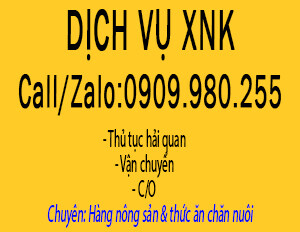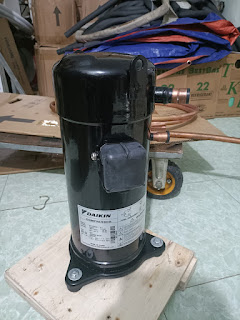Donald
Active Member
- Bài viết
- 115
- Reaction score
- 140
Dear All,
They have been called the two worst words in shipping: “Customs Exam”. That phrase can strike fear in the heart of even the most seasoned shipper or logistics professional. In this article, we’ll take a look at exactly what a Customs Exam is all about, what it means to you as an importer and what can be done to mitigate the risk of having it happen to you.
Why Me? – What Causes an Exam
You, your overseas supplier and your freight forwarder have done everything perfectly. The schedule has run like clockwork and your freight is due for delivery any day now. Then, you get that most unwelcome of emails or phone calls. Your freight has been flagged by the U.S. Customs and Border Patrol (CBP) for an exam. Your heart sinks and you mutter a few choice expletives that we’ll omit here. Everyone’s first question: Why Me?
In the post 9/11 world, it is no secret that security measures are on the rise and that CBP is increasing frequency with which they flag shipments for exams. Under 19 USC 1467, CBP has the right to examine any shipment imported into the United States, and you, the importer, are required to bear the cost of those cargo exams. Not only can an exam delay delivery of your freight by days, or weeks, the fees you are responsible for can run into the hundreds of dollars for which you have not budgeted.
What could you have done wrong? You’re not a bad guy, right? Unfortunately, CBP will not disclose the reason for a hold on a specific shipment, citing security concerns. They don’t want the bad guys to know what they are looking for. What we do know is that the CBP “selectivity process” uses complex algorithms to evaluate the degree of risk associated with each shipment. Factors include:
Types of Exams
There is more than one type of exam and they vary in the length of time required and invasive. Let’s take a quick look at the most common varieties.
1/ VACIS (Vehicle and Cargo Inspection Systems) / X-Ray Exam
VACIS exams use gamma ray technology to produce images of tankers, commercial trucks, sea and air containers, and other vehicles for contraband such as drugs, weapons, and currency. This exam does not break the seal on your container, and is usually completed ship-side or within the port compound. Depending on the size of the freight (number of pallets, container type), exam fees can range from $25 (per pallet, if LCL) to as much as $350 (40’ container). In addition, you are responsible for any trucking charges made necessary by the transportation of the freight to/from the exam site. Yes, you read that right. You pay for trucking. Exam charges must be paid before the container can be released from the port.
NOTE: If you are sending your freight in a consolidated container (LCL shipment), in the event the container is flagged goes on a VACIS exam, then the cost of the VACIS is spread over the entire container.
2/ Tailgate/Backdoor Exam
In this type of exam, CBP has the container moved to an exam area within the port. There, they break the seal and open the back of the container and do a visual inspection of the contents without handling the cargo. Pending any suspicious indicators, the container could either be flagged for a more intensive examination or released. Costs for this exam can range from $100 and up, depending on the port.
3/ Intensive Exam / Contraband Enforcement Team (CET) Exam
This is the one you do not want. Not only does it require a thorough search your container and all of the freight in it, this exam has hefty fees associated with it. Once again, you are responsible for payment of those fees before the container can be released from the port. An Intensive Exam is usually initiated after a VACIS exam when something suspicious or indicative of high risk is spotted. Intensive examinations require your freight to be moved off-port to a Customs Examination Station (CES) in order to be physically unloaded and inspected. Because the freight is not yet released by U.S. Customs, your forwarder must use a bonded carrier in order to move the cargo to the CES. Once the container arrives at the CES, it may wait up to a week or more in line depending on how many are in the queue. To add insult to injury, you will likely be charged for demurrage or detention by the steamship line for having their equipment tied up and out of the port during the exam. Keep in mind that all ports differ in their definition of whether demurrage is applicable to a container that has been moved for a required exam. After the exam is completed, the importer must pay any charges associated with the exam as well as those due to the steamship line. An Intensive Exam can range in cost from $500 to well over $1000, depending on the port and quantity of freight involved.
NOTE: If the suspicious cargo is in a consolidated container and an intensive exam is required, Customs often waits for the container to be stripped and just examines the cargo designated for inspection.
CET Exam: Physical examination of the container. CET stands for Contraband Enforcement Team. If your import cargo is subject to CET exam it will be transported to customs exam warehouse for physical inspection for narcotics, drugs, weapons etc
4/ USDA Exam
The U.S. Department of Agriculture (USDA) has it own set of inspectors. This exam occurs when the shipment contains food products or wood products at risk of containing pests. Examples of the latter include wooden crating created overseas where the supplier did not use properly treated wood. All wood used in shipping for pallets, crating and so forth, must comply with international ISPM-15 standards. This exam may be ordered currently with the other exams listed above.
How to Minimize Your Chances of An Exam
In the end of the day, the reasons for an exam are fuzzy at best and CBP is never going to disclose the actual reason. Nonetheless, there are several things you can do to minimize your risk of an exam:
They have been called the two worst words in shipping: “Customs Exam”. That phrase can strike fear in the heart of even the most seasoned shipper or logistics professional. In this article, we’ll take a look at exactly what a Customs Exam is all about, what it means to you as an importer and what can be done to mitigate the risk of having it happen to you.
Why Me? – What Causes an Exam
You, your overseas supplier and your freight forwarder have done everything perfectly. The schedule has run like clockwork and your freight is due for delivery any day now. Then, you get that most unwelcome of emails or phone calls. Your freight has been flagged by the U.S. Customs and Border Patrol (CBP) for an exam. Your heart sinks and you mutter a few choice expletives that we’ll omit here. Everyone’s first question: Why Me?
In the post 9/11 world, it is no secret that security measures are on the rise and that CBP is increasing frequency with which they flag shipments for exams. Under 19 USC 1467, CBP has the right to examine any shipment imported into the United States, and you, the importer, are required to bear the cost of those cargo exams. Not only can an exam delay delivery of your freight by days, or weeks, the fees you are responsible for can run into the hundreds of dollars for which you have not budgeted.
What could you have done wrong? You’re not a bad guy, right? Unfortunately, CBP will not disclose the reason for a hold on a specific shipment, citing security concerns. They don’t want the bad guys to know what they are looking for. What we do know is that the CBP “selectivity process” uses complex algorithms to evaluate the degree of risk associated with each shipment. Factors include:
- Number of previous shipments: Are you a first time importer who lacks a track record with CBP?
- Identity of manufacturer, shipper, importer, and consignee: Are any of these entities associated with previous “problem” shipments, or violations of U.S. regulations?
- Origin, routing, and destination of shipment: Did the shipment come from, or pass through, any locations where unauthorized persons might have had access to the cargo?
- Who arranged and loaded the shipment: Was everyone involved in handling the shipment a “known entity” to U.S. Customs, with an adequate cargo security program?
- Commodity: Does this type of product often have inaccurate declarations of classification or value, high potential for commercial fraud, high risk factors for consumer product safety issues, or intellectual property rights issues?
Types of Exams
There is more than one type of exam and they vary in the length of time required and invasive. Let’s take a quick look at the most common varieties.
1/ VACIS (Vehicle and Cargo Inspection Systems) / X-Ray Exam
VACIS exams use gamma ray technology to produce images of tankers, commercial trucks, sea and air containers, and other vehicles for contraband such as drugs, weapons, and currency. This exam does not break the seal on your container, and is usually completed ship-side or within the port compound. Depending on the size of the freight (number of pallets, container type), exam fees can range from $25 (per pallet, if LCL) to as much as $350 (40’ container). In addition, you are responsible for any trucking charges made necessary by the transportation of the freight to/from the exam site. Yes, you read that right. You pay for trucking. Exam charges must be paid before the container can be released from the port.
NOTE: If you are sending your freight in a consolidated container (LCL shipment), in the event the container is flagged goes on a VACIS exam, then the cost of the VACIS is spread over the entire container.
2/ Tailgate/Backdoor Exam
In this type of exam, CBP has the container moved to an exam area within the port. There, they break the seal and open the back of the container and do a visual inspection of the contents without handling the cargo. Pending any suspicious indicators, the container could either be flagged for a more intensive examination or released. Costs for this exam can range from $100 and up, depending on the port.
3/ Intensive Exam / Contraband Enforcement Team (CET) Exam
This is the one you do not want. Not only does it require a thorough search your container and all of the freight in it, this exam has hefty fees associated with it. Once again, you are responsible for payment of those fees before the container can be released from the port. An Intensive Exam is usually initiated after a VACIS exam when something suspicious or indicative of high risk is spotted. Intensive examinations require your freight to be moved off-port to a Customs Examination Station (CES) in order to be physically unloaded and inspected. Because the freight is not yet released by U.S. Customs, your forwarder must use a bonded carrier in order to move the cargo to the CES. Once the container arrives at the CES, it may wait up to a week or more in line depending on how many are in the queue. To add insult to injury, you will likely be charged for demurrage or detention by the steamship line for having their equipment tied up and out of the port during the exam. Keep in mind that all ports differ in their definition of whether demurrage is applicable to a container that has been moved for a required exam. After the exam is completed, the importer must pay any charges associated with the exam as well as those due to the steamship line. An Intensive Exam can range in cost from $500 to well over $1000, depending on the port and quantity of freight involved.
NOTE: If the suspicious cargo is in a consolidated container and an intensive exam is required, Customs often waits for the container to be stripped and just examines the cargo designated for inspection.
CET Exam: Physical examination of the container. CET stands for Contraband Enforcement Team. If your import cargo is subject to CET exam it will be transported to customs exam warehouse for physical inspection for narcotics, drugs, weapons etc
4/ USDA Exam
The U.S. Department of Agriculture (USDA) has it own set of inspectors. This exam occurs when the shipment contains food products or wood products at risk of containing pests. Examples of the latter include wooden crating created overseas where the supplier did not use properly treated wood. All wood used in shipping for pallets, crating and so forth, must comply with international ISPM-15 standards. This exam may be ordered currently with the other exams listed above.
How to Minimize Your Chances of An Exam
In the end of the day, the reasons for an exam are fuzzy at best and CBP is never going to disclose the actual reason. Nonetheless, there are several things you can do to minimize your risk of an exam:
- Provide Documents Early: Provide your forwarder and/or customs broker with your import documents (Commercial Invoice, etc.) as early as possible in the process so they can file the entry quickly.
- Don’t Co-load Time-Critical Shipments: If you have a time-critical shipment on a short deadline, don’t leave your fate in the hands of another shady importer in a consolidated container. If you can afford it, spend the extra money for a full container, even if you don’t need all of the space.
- Get a Continuous Entry Bond (CEB): We can help you arrange for these bonds for your shipments. They have been shown to greatly expedite imports and reduce the risk of exam flags. It tells Customs you are legit.
- Use Reliable Partners: Make sure you have reliable partners throughout the supply chain, including your supplier. If any of the links in the chain are shady operators or guilty of previous violations, it is a sure ticket to an exam.
Quan tâm nhiều
ĐỊNH MỨC VÀ TỶ LỆ HAO HỤT NGUYÊN VẬT LIỆU TRONG...
- Thread starter Chaien
- Ngày gửi
Điều kiện giao hàng DPU INCOTERMS 2020 Bản tóm lược...
- Thread starter Nguyên Đăng Việt Nam
- Ngày gửi
M
Sửa tờ khai khi tờ khai đã thông quan do sai số lượng
- Thread starter Mr.Hoang
- Ngày gửi
Khai hủy tờ khai trên cổng thông tin dịch vụ công...
- Thread starter richkingng
- Ngày gửi
E
Các bước đăng ký kiểm dịch thực vật online cho hàng...
- Thread starter Elena-TPG
- Ngày gửi
Cách khai phí D/O phí vệ sinh cont và phí CIC/EIS...
- Thread starter Chaien
- Ngày gửi










